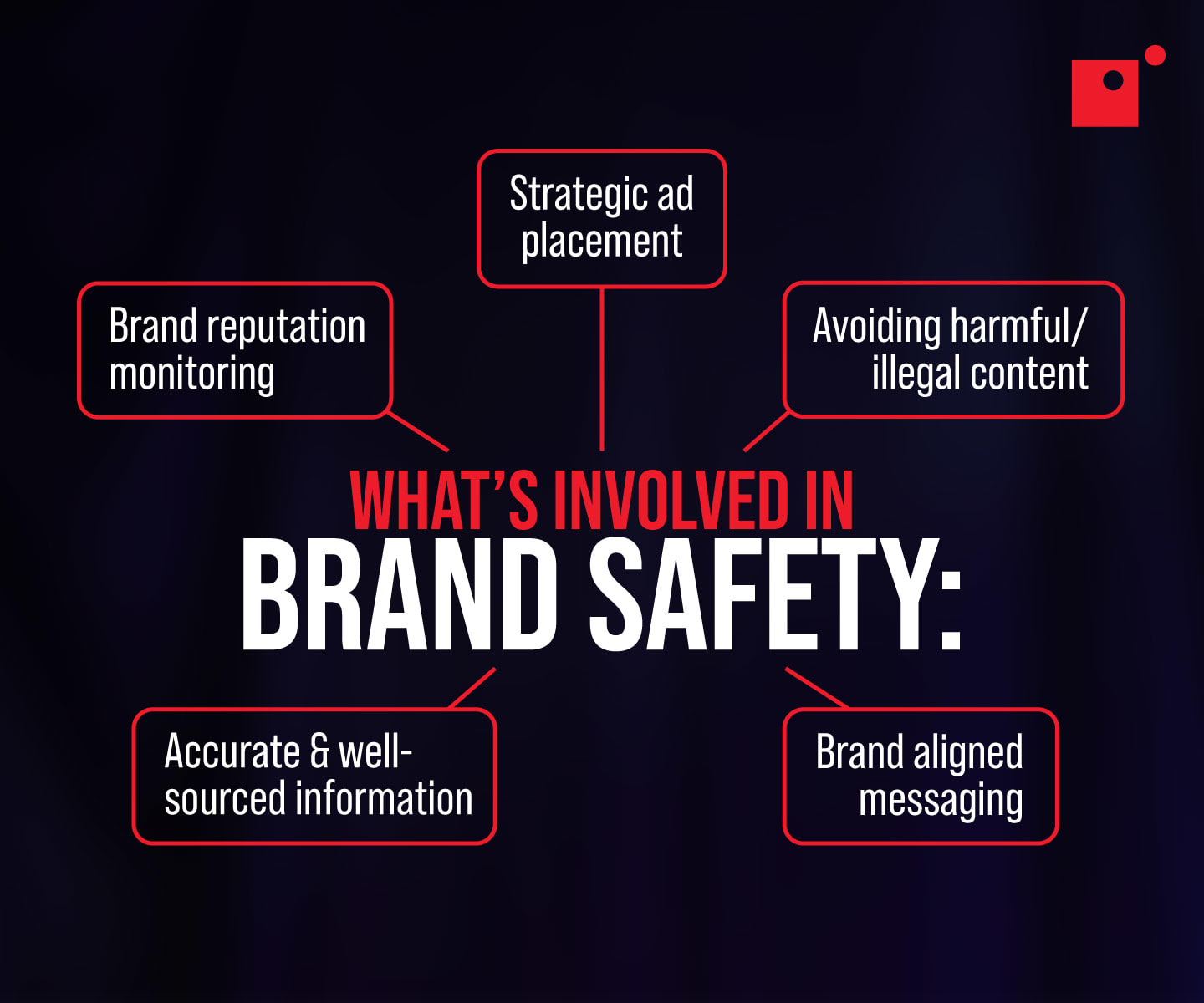As brands expand their presence across social platforms, the risk of being associated with harmful, misleading, or controversial content grows exponentially. Whether it’s an ad placement next to misinformation or a partnership with an influencer who sparks backlash, the consequences of poor brand safety management can be swift and severe.
The stakes are high, and your audience is paying attention.
Social media platforms offer both opportunity and unpredictability. Each channel—whether it’s Meta’s ecosystem, TikTok’s fast-paced feed, or X’s open discourse—comes with its own set of controls, risks, and audience expectations.
Understanding how these platforms operate and how users perceive brand behavior within them is key to maintaining trust and relevance. Brand safety isn’t just about avoiding negative associations; it’s about aligning with values, context, and community standards.
Join us in exploring the essentials of brand safety across major social platforms, diving into audience perception, platform-specific controls, and the evolving tools available to marketers. From the basics to advanced strategies, we’ll break down what it takes to protect your brand’s reputation while staying visible and engaging in the social space.
Learn how brands can balance creative freedom with data-driven strategies in Impact’s webinar, Scientific Marketing: Transforming Bold Ideas Into Bottom-Line Results.
The Basics of Social Media Brand Safety
At its core, brand safety refers to the strategies and safeguards that ensure a brand’s content, ads, and messaging don’t appear alongside harmful or inappropriate material. On social media, this concept becomes more complex due to the dynamic nature of user-generated content, algorithm-driven feeds, and real-time engagement.
Unlike traditional media, social platforms are constantly evolving, which means brand safety requires ongoing attention and adaptation.
The risks range from obvious threats—like appearing next to hate speech or misinformation—to more nuanced challenges, such as being associated with polarizing influencers or trending topics that clash with brand values.
For content teams and marketers, this means thinking beyond ad placement. It involves understanding the tone of conversations, the cultural context of each platform, and how audiences interpret brand behavior in real time.
To build a strong foundation, brands need to establish clear safety guidelines, vet partnerships carefully, and use platform tools to control where and how their content appears. This includes leveraging blocklists, keyword filters, and audience targeting features.
But just as important is the internal alignment—ensuring that everyone from content creators to executives understands the values and messaging of the brand.
Key Elements of Brand Safety on Social Media:
- Content adjacency controls – Tools that prevent ads from appearing next to risky or inappropriate content.
- Keyword and topic filters – Settings that block specific terms or themes from triggering ad placements.
- Audience targeting – Ensuring content reaches the right demographic to avoid misalignment or backlash.
- Influencer vetting – Reviewing creator history and values before partnerships are formed.
- Real-time monitoring – Actively tracking brand mentions and engagement to catch issues early.
- Crisis response protocols – Predefined steps for managing reputational risks when they arise.
How to Ensure Brand Safety
As mentioned above, brand safety starts with internal alignment. Establish clear guidelines that define acceptable content, tone, and partnerships based on your brand’s values and audience expectations. These should be shared across teams and revisited regularly to stay current with platform changes and cultural shifts.
A unified understanding helps prevent missteps and ensures consistency across campaigns.
Platform controls are your first line of defense. Meta, TikTok, and X offer tools like keyword filters, topic exclusions, and audience targeting to help manage where and how your content appears. Supplement these with third-party verification services that monitor ad placements and flag risky associations.
When working with influencers, go beyond follower counts—review their content history, audience engagement, and alignment with your brand’s ethos.
Real-time monitoring is essential. Use social listening tools to track sentiment and brand mentions, and have a crisis response plan in place for when issues arise. The ability to act quickly and transparently can make the difference between a minor hiccup and a reputational hit.
Ultimately, brand safety is an ongoing effort—one that blends technology, strategy, and human judgment.
Controls for Different Platforms
Brand safety tools aren’t uniform across social platforms. Each channel—whether it’s Meta, TikTok, or X—offers its own mix of content moderation policies, ad placement controls, and audience dynamics. That means marketers need to tailor their approach to fit the platform’s unique environment, rather than relying on a blanket strategy.
In the next few sections, we’ll break down what each platform offers and how those tools can be used to safeguard your brand. From Meta’s inventory filters to TikTok’s creator vetting and X’s evolving moderation landscape, understanding these controls is essential for building platform-specific safety strategies that actually work.
Meta Brand Safety
Meta provides one of the most advanced brand safety ecosystems among social platforms. Through its Brand Safety Hub, advertisers can use inventory filters, blocklists, and publisher lists to control where ads appear across Facebook, Instagram, and the Audience Network.
These tools help brands avoid placements near sensitive or controversial content, while integrations with third-party verification partners offer added transparency and control.
Beyond paid media, Meta’s Community Standards shape the environment for organic content. These guidelines influence what users can post and how content is moderated, which indirectly affects brand perception.
Brands should stay informed about updates to these standards and monitor how their content interacts with user behavior and trending topics. Meta’s tools are powerful, but they’re most effective when paired with a proactive internal strategy.
TikTok Controls
TikTok’s brand safety approach centers around its Community Guidelines and content moderation systems, which aim to keep the platform free from harmful or inappropriate material. For advertisers, TikTok offers tools like exclusion lists, category filters, and audience targeting to help control where ads appear.
These features allow brands to avoid placements alongside sensitive content, though the fast-paced nature of TikTok’s feed means real-time monitoring is especially important.
Influencer partnerships are a major part of TikTok strategy, and vetting creators is essential. Brands should assess not just a creator’s content style, but also their engagement history and alignment with brand values. TikTok’s Creator Marketplace provides some transparency, but manual review is still key.
Because trends shift quickly and content can go viral unexpectedly, brands need to stay agile—ready to respond if a partnership or placement begins to attract negative attention.
What About X?
X (formerly Twitter) presents unique brand safety challenges due to its open, real-time nature and emphasis on public discourse. While the platform has introduced tools like keyword blocklists, sensitive content filters, and brand safety settings for advertisers, the effectiveness of these controls can vary.
Content adjacency is harder to manage on X, especially when ads appear in user-generated threads or next to trending topics that shift rapidly and unpredictably.
For brands active on X, vigilance is key. Monitoring mentions, sentiment, and trending hashtags in real time helps identify potential risks before they escalate. Because X is often a hub for breaking news and polarizing conversations, brands should be cautious about engaging with trending content unless it aligns clearly with their values.
A strong social listening strategy, paired with clear internal guidelines, can help brands navigate the platform’s volatility while maintaining credibility and trust.
Why Brand Safety Matters
Brand safety isn’t just a marketing concern—it’s a business imperative. In an era where consumer trust is fragile and reputational damage can spread in minutes, brands must actively protect how they’re perceived online.
A single misstep, whether it’s an ad placed next to harmful content or a poorly vetted influencer partnership, can lead to backlash, lost revenue, and long-term damage to brand equity.
What makes brand safety especially critical on social media is the speed and scale of engagement. Platforms amplify content rapidly, and users are quick to call out misalignments between brand messaging and behavior. This means brands must not only avoid harmful associations but also demonstrate consistency with their values.
Audiences expect brands to be intentional, transparent, and socially aware—and they reward those that meet those expectations with loyalty and advocacy.
Key Takeaways:
- Brand safety protects reputation and helps avoid costly public backlash.
- Audience trust depends on consistency between brand values and behavior.
- Unsafe ad placements reduce engagement and lower campaign performance.
- Real-time monitoring and proactive strategy are essential across platforms.
- Brand safety is a long-term investment in credibility, loyalty, and ROI.
Wrapping Up on Brand Safety
Brand safety is a strategic necessity in today’s social media landscape. As platforms and audiences evolve, brands must take an active role in shaping how they’re seen online. That means using platform-specific tools, aligning internally on values, and staying alert to shifts in sentiment and content trends.
A proactive approach helps prevent reputational risks and ensures your messaging lands in the right context.
Ultimately, brand safety is about more than avoiding controversy—it’s about building trust.
When brands show consistency, transparency, and awareness, they create stronger connections with their audiences. With the right safeguards in place, brand safety becomes a foundation for long-term credibility and performance across every social channel.
Find out how you can start blending bold creative moves with data-driven strategy in Impact’s webinar, Scientific Marketing: Transforming Bold Ideas Into Bottom-Line Results.



